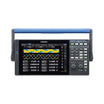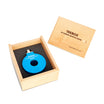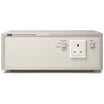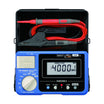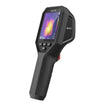
Trailing Edge Measurements
Trailing-edge (TE) noise is one of the main components of aerofoil self-noise. The phenomenon plays an important role in the noise generation in the field of aviation, wind turbines, turbo-machinery, etc.
TE sound contributes to the noise from lifting surface flaps, rotating machines and certain turbulent nozzle flows.
When turbulent boundary layer eddies are convected past the trailing edge of a large (relative to acoustic wavelength) body, their aeroacoustic source characteristics are modified by the edge. This scattering mechanism produces strong, broadband radiation to the far field. If there is coherent vortex shedding, typically associated with blunt trailing edges and/or high angles of attack, tonal or narrowband noise is also present.
The mechanism of the TE generated noise has been a topic of research interest over several decades. This has been addressed both through measurements and mathematical modelling, which allow analytical models to predict the TE noise. These models predict the noise by relying on the properties of turbulence and the boundary layer, which are mainly calculated from upstream geometry and flow conditions. Examples of the main input parameters of these models are the surface pressure fluctuation, turbulence length scales, convection velocity, and boundary layer displacement thickness.
Based on today’s models, several attempts have been made to reduce the noise both by modifying the flow over the surface or by changing the geometry. These have been addressed by measurements in anechoic chambers and by using computational methods, both of which are limited by their own constraints. Capturing the low frequency components of scattered noise is not easy, often due to background jet noise in anechoic wind tunnels and the finite size of the anechoic chambers. In addition, resolving the pressure fluctuations across a wide range of frequencies due to the broadband nature of the TE noise is necessary, which causes inevitable difficulties for fluid flow solvers. It is, therefore, very often difficult to accurately describe the exact resolution of the TE noise.
Read more about aeroacoustic measurements for automotive and aerospace testing solutions.
Download our Measurement Microphones for Aeroacoustics brochure.
Discover the new Ultra-Thin Precision (UTP) microphones with an ultra-small form factor, only 1 mm in height.


